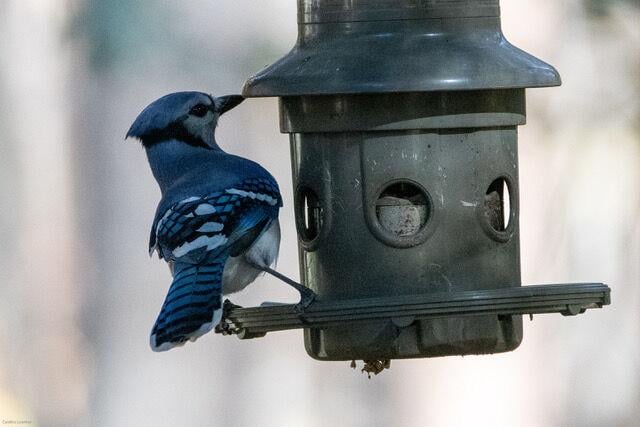
The Virginia Department of Wildlife Resources lifted its recommendation to take down bird feeders and empty bird baths after the area saw a steep decline in birds suffering from symptoms associated with this spring’s mysterious bird illness -- but the cause of the bird mortality event remains a mystery.
Between May 23 and June 30, the DWR received approximately 450 reports of sick or dying birds with symptoms of the mystery illness, which included crusty, swollen or bulging eyes, vision loss, and/or neurological problems. Of those cases, Prince William County accounted for between 24 and 37 sick birds, according to the DWR.
To limit potential disease transmission, the DWR recommended in early June that residents in affected areas, including all of Northern Virginia, cease feeding birds and empty bird baths.
But as of mid-August, reports of sick and dead birds fell off in many Virginia jurisdictions, and the DWR lifted its recommendation on Aug. 20.
The Blue Ridge Wildlife Center in Boyce, Virginia, has witnessed the same decline in sick birds with the symptoms of the mysterious bird illness brought to the clinic. In late May, BRWC was seeing three to five cases per day. Then, starting in mid-June, cases declined to one to two per week through early August. The BRWC hasn’t seen any suspect cases in the past two weeks, said Dr. Jen Riley, the wildlife center’s director of veterinary services.
According to the DWR, natural resource management agencies continue to work with diagnostic laboratories to investigate the cause the illness, though none has been determined. Many potential pathogens have been ruled out by testing affected birds including several bacterial, viral and parasite causes. Toxicology tests have been negative for heavy metals, common pesticides,and herbicides. The DWR states that “[a]dditional diagnostic tests, including metagenomics work, are ongoing.” Metagenomics is the study of genetic material recovered directly from environmental samples.
But Riley warns that the mystery illness is not the only disease risk for birds, noting that all of the normal feeder diseases they treat at BRWC each year -- which she says accounts for more sick birds than the 100 suspect cases they saw this summer -- are still circulating.
One benefit of this summer’s mystery bird disease, however, was that incidents of other ailments dropped after residents removed their bird feeders, Riley said.
“The decrease in feeding birds through feeders has been the greatest silver lining of this mortality event,” she said.
Feeders can return with necessary precautions
If people choose to feed birds, they must be committed to doing it safely and that means being diligent about cleaning feeders regularly, Riley said.
Proper cleaning means completely emptying feeders and washing with a 10% bleach solution at least once a week and then rinsing, letting air dry fully and refilling with just enough seed to last a week.
Similarly, bird baths and other water sources should be dumped, scrubbed, and bleached regularly each week, she said.
Riley said that BRWC always “encourage[s] people to plant native plants that feed birds safely and create good habitat. In the long run, this is far more beneficial than the cleanest feeder.”
"bird" - Google News
August 27, 2021 at 11:00PM
https://ift.tt/3mFyzNZ
Wildlife officials say bird feeders can return – with precautions – as incidence of mysterious bird illness wanes - Prince William Times
"bird" - Google News
https://ift.tt/2s1zYEq
https://ift.tt/3dbExxU
Bagikan Berita Ini














0 Response to "Wildlife officials say bird feeders can return – with precautions – as incidence of mysterious bird illness wanes - Prince William Times"
Post a Comment